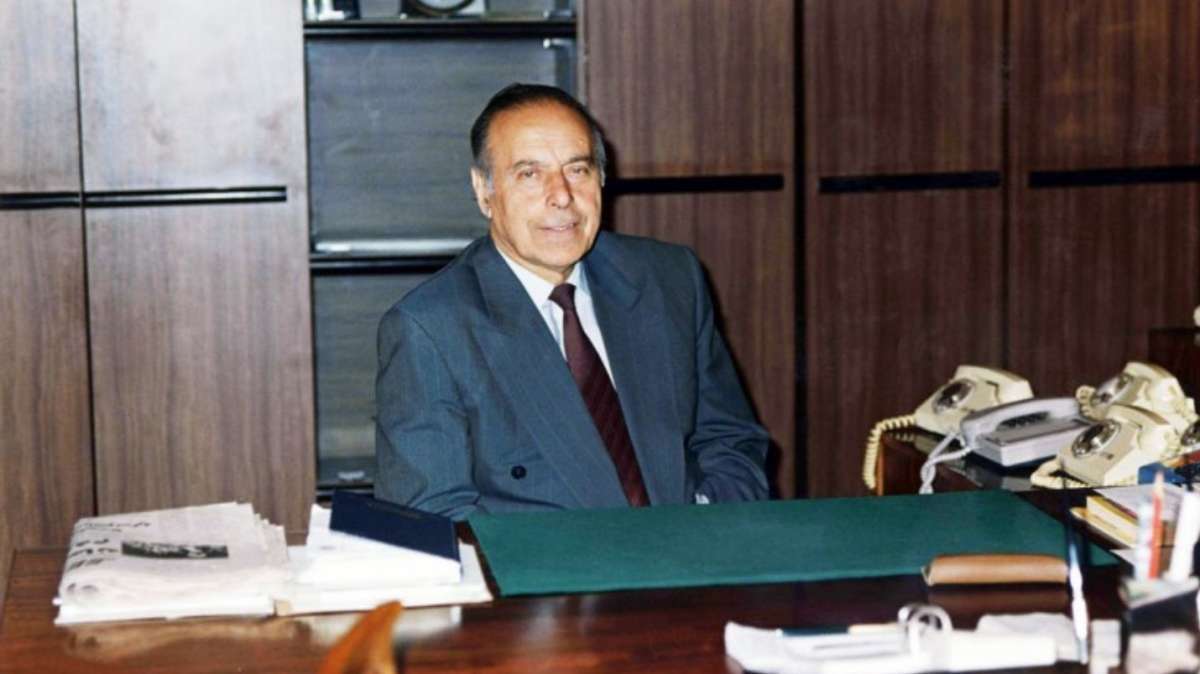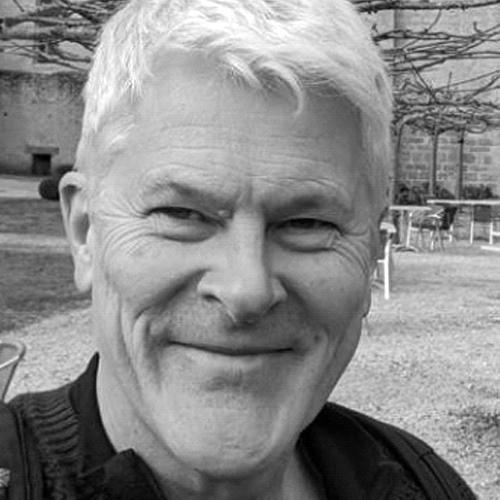- Home
- Heydar Aliyev – Centenary of Azerbaijan’s ‘National Leader’
Heydar Aliyev – Centenary of Azerbaijan’s ‘National Leader’
Today marks 100 years since the birth of Heydar Aliyev, who is referred to as Azerbaijan’s 'national leader.'

Image: metro.gov.az
Wherever you go in Azerbaijan, it’s impossible not to notice the name of Heydar Aliyev. Baku’s international airport is named for him. Heydar Aliyev Avenue is the thundering thoroughfare that brings you into the city from that airport. The city’s most iconic marvel of contemporary architecture is the Heydar Aliyev Center. And virtually every town and city in the country has at least one museum, school or other facility that carries his name. So, even a first-time visitor is likely to be intrigued by the man whose decade as president has shaped modern Azerbaijan and who, even 20 years after his death, is considered the “National Leader.”
That’s all the more so in the centenary of his birth: 2023 has been named Heydar Aliyev Year by an official decree with a raft of events, the minting of a special gold coin and the launch of a Heydar Aliyev 100 medal.
Younger Years
Heydar Alirza oghlu Aliyev was born on 10 May 1923 in Nakhchivan. That’s now a disconnected exclave of Azerbaijan but had been fairly central as a power base in the pre-Russian Azerbaijani lands. Even in the Soviet era, it proved to be the cradle of producing several important cultural and political figures.
Aliyev rose rapidly through the ranks of the security services, blessed with piercing blue eyes, remarkable stamina, and an almost photographic memory. In 1949 he graduated from the Leningrad staff training school of the KGB, becoming the organization’s Azerbaijani head in 1967 and going on to become the republic’s first party secretary in 1969—essentially Soviet-era leader. His skill, political gravitas, and a personal friendship with Soviet leader Leonid Brezhnev helped bring more opportunities for Azerbaijanis within the USSR. Then in 1982, Aliyev moved to Moscow, having been promoted to become the ‘first Turk in the Politburo’[1] working under the new Soviet leader Yuri Andropov, another former KGB chairman.
Aliyev in KGB uniform. Image: public domain
Five years later, in the new Gorbachev era, Aliyev left the Politburo under circumstances which remain disputed. Three years later, in protest after the Black January massacre[2], Aliyev resigned from the Communist Party and returned from Moscow to self-imposed exile in a small, anonymous flat in Nakhchivan. According to 1991 conversations there with veteran journalist Thomas Goltz, Aliyev believed that the attack on Baku civilians showed that Gorbachev was a fraud who had gone about ‘Glasnost’ and ‘Perestroika’ in too heavy-handed a way, underlining that the process had actually started under Andropov in a more subtle fashion.
Despite his now modest circumstances, Heydar Aliyev maintained a faithful network of connections and re-branded himself as a fighter for the independence of Azerbaijan.
Azerbaijan from Rags to Riches
In the early 1990s, Azerbaijan was on the brink of collapse. Black January had kick-started a move towards independence from the USSR. However, tensions were building with neighbouring Armenia leading to mass population exchanges between the countries and a bitter war which led to nearly a fifth of Azerbaijan’s territory under occupation.
Azerbaijan’s short-term leader at the time of independence was Soviet-era left-over Ayaz Mutallibov, who became increasingly discredited for failing to build an effective army when Armenians planned and committed the Khojaly Massacre in February 1992. He was overthrown in May 1992 His successor, former dissident Abulfaz Elchibey, started well in a counter-offensive against Armenian forces, but when this faltered, he proved unable to hold the country together as rebel troops marched on Baku. With civil war appearing imminent, on 27 June 1993, Elchibey invited the wily political maestro Heydar Aliyev to return to Baku to help organize resistance.
Heydar Aliyev and Abulfaz Elchibey in the brief June 1993 window when the balance of power was shifting between them. Image: Thomas Goltz
Aliyev was shoehorned into the position of the Speaker of the Parliament, the second in the chain of command. When Elchibey fled three days later, Aliyev essentially took over the running of the country, being elected president in October. While Armenian gains continued, Aliyev snuffed out the internal insurrection and stabilized the situation within the rest of the country. Such was the perceived importance of his return to Baku that June 15 has since become celebrated as National Salvation Day, implying that the whole country might have imploded without Aliyev.
That might seem like hyperbole, but there is more than a grain of truth in the idea. The country was still in a parlous state. A period of semi-anarchy combined with the total dislocation of the Soviet inter-republic supply chain had left virtually every industrial enterprise bankrupt, if not looted and destroyed. Reconstruction would take a generation—even five years later, a journalist wrote: “The decrepitude of Baku is what stuns most of all… the mansions are crumbling, the roads are rutted, and the bay is littered with rusting ships and derelict oil rigs.”
Heydar and Ilham Aliyev celebrate the first new oil produced following the “Contract of the Century” production sharing agreement of 1994. Image: azernews.az
However, Aliyev’s genius was to play the long game creating stability while parlaying the country’s oil potential into a source of finance to reconstruct the shattered country. One of Elchibey’s first moves as president had been to invite British PM Margaret Thatcher to Baku and to begin talks with BP on developing offshore Caspian Oil. However, under Aliyev in 1994, the much-heralded “Contract of the Century” was signed between Azerbaijan and a consortium of oil companies laying the financial foundations for eventual national renewal. A sovereign oil fund (SOFAZ) followed in 1999 to help stabilize the economic dislocation of newly flowing petroleum revenues. Though some dispute how well the fund has been managed, by 2023, it has accumulated an estimated total of $165 billion to be held in trust for the country’s future. Once the oil money started rolling in, the country underwent a rapid transformation, although Heydar Aliyev died a little too soon to see the full fruits of the changes.
Legacy
In April 2003, Aliyev’s health deteriorated. and he was moved for treatment to a clinic in Cleveland, Ohio (U.S.) and stepped down as a presidential candidate in forthcoming elections in favour of his son, Ilham. He was declared dead on 12 December 2003, with a genuine outpouring of grief at his funeral.
Even before his return to power, Aliyev laid the groundwork for a form of guided democracy by founding the YAP (Yeni Azərbaycan Partiyası, New Azerbaijan Party). In so doing, he created a new societal landscape with a dominant power base that maintained enough of the features of the former Soviet system to feel familiar but with enough of a flavour of openness for the possibility of a later plurality. This author, having worked in Azerbaijan as a writer and researcher in the 1990s, arrived in Baku in 1997 with minimal credentials to write a travel guide. With the most minimal of formality, I found myself given a press card and fairly free range to explore at will. While low-level officials retained an occasionally extreme aversion to outsiders observing ‘their’ areas, my sense was that at a higher level, the Heydar Aliyev government wanted to encourage journalistic freedom, convinced that anyone observing the reality of Azerbaijan’s suffering at the hands of Armenian occupation and Soviet collapse, would be bound to write sympathetically. The fact that few journalists did probably led the government to realize this was naïve, leading to a tightening of the rules.
It’s also worth reflecting on what was then still a fairly precarious geopolitical situation. In conversations I had at the time, at least one minister reminded me that the last time Azerbaijan had been independent (1918-1920), freedom had only lasted two years. It was clear at the highest levels that stability and diplomatic agility would be essential if Azerbaijan were to last much longer this time around. Today, such doubts seem hard to imagine, but there’s little doubt that Heydar Aliyev’s considerable statesmanship was pivotal to the process. In a 2003 obituary, the widely respective researcher, Tom de Waal, called Aliyev the “ultimate political operator in the Soviet Union” yet “a born pragmatist who skilfully shifted [independent] Azerbaijan's strategic priorities westwards in the new era.”
With this year the centenary of his birth, you’ll find many overly fulsome expressions of appreciation for Heydar Aliyev. For example, AzerNews called him the “Saviour of his nation,” while according to the Ministry of Science and Education, “Independent Azerbaijan is the gift of the great leader to the present and future generations, and his rich and diverse heritage is the national wealth of our people.” These statements can sound uncomfortably gushing. But for many in Azerbaijan, there is a deep and genuine appreciation for the man who stopped the post-Soviet geopolitical rot and set a course for economically and politically sustainable independence in one of the world’s most potentially volatile regions.
[1] The Politburo was essentially the USSR’s equivalent of a cabinet of ministers – the highest political position possible beneath First Secretary.
[2] In which Red Army troops massacred hundreds of Azerbaijanis.
Read this next






